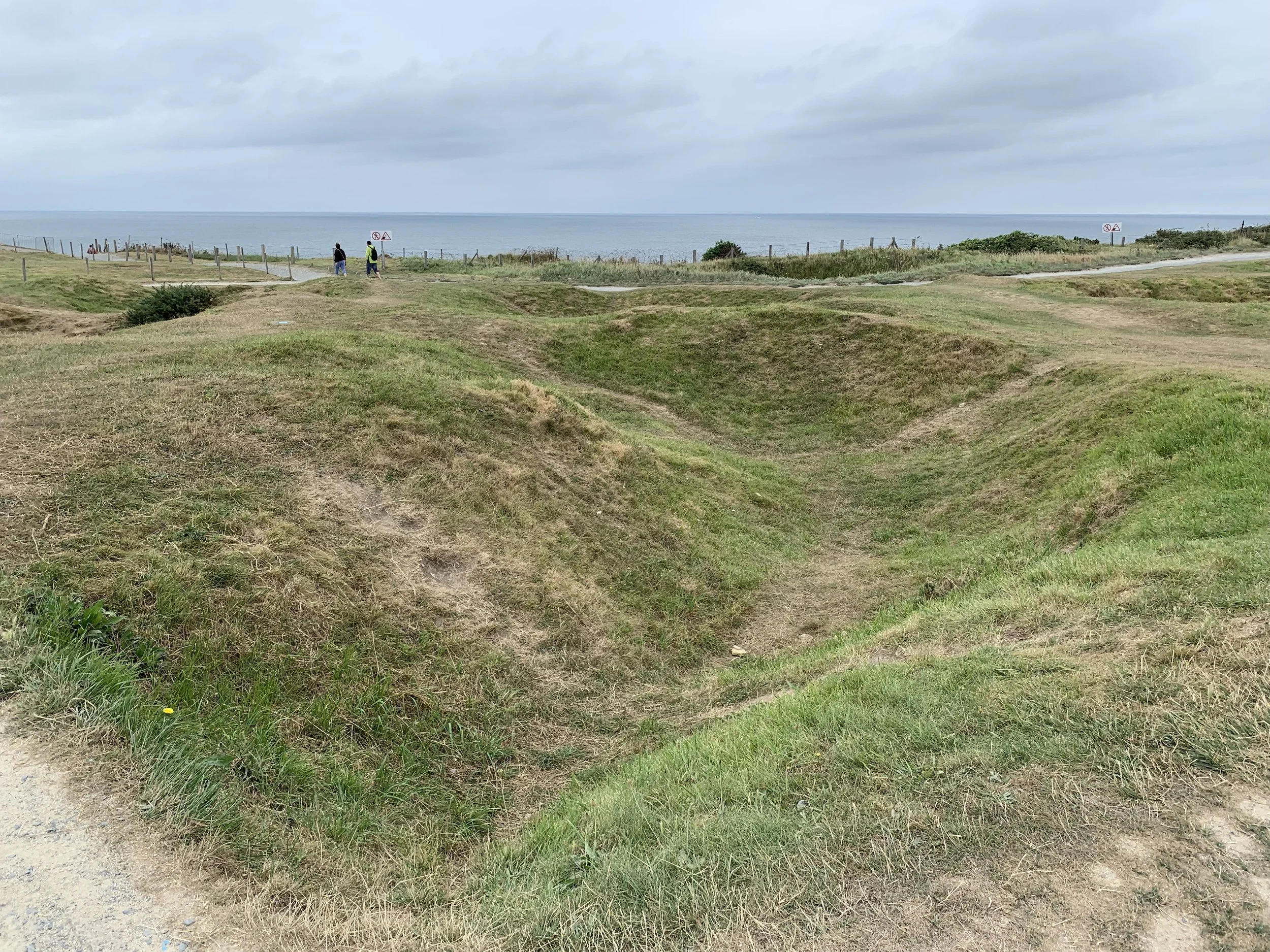Pointe-Du-Hoc, Normandy
The cratered landscape from both aerial and ship bombardment.
This gun emaplcement took a direct hit from the ships providing cover for the Rangers.
In August, I made a one day trip from Paris to tour the Normandy Beaches which gained fame in 1944 on D-Day. Unfortunately, the weather wasn’t kind. What started as overcast and windy conditions became showers and then rain set in. However, I was able to get a good look at the American section of the D-Day landing sites. Over the next couple of blogs, I will show you some of the photos.
Our first stop was Pointe-du-Hoc on the eastern end of the D-Day Beaches. This was an important site to the allies as the gun batteries there, had the range to cover the Omaha and Utah Beach landing sites. Troops from the 2nd and 5th US Ranger Battalions were tasked to scale the cliffs and capture the gun batteries. It was up to allied ships including the battleship USS Texas to provide support by bombarding the area as the landing occurred.
Typical gun emplacement.
A month before D-Day, an aerial bombardment of Pointe-du-Hoc took place. As a result, the Germans considered their guns to be in danger and could be better used elsewhere. The guns were removed and large wooden poles were put in their place to give the appearance (from the air) that they were still there.
During the attack on Pointe-du-Hoc, a series of errors and misfortunes by the allies, would see only about a third of the planned number of soldiers land there. Within hours the Rangers had captured Pointe-du-Hoc and they quickly discovered that the guns had been removed. Of the 225 American soldiers who came ashore that day at Pointe-du-Hoc, only 90 remained after two days of fighting.
As a footnote, the other Ranger Battalion soldiers who didn’t land at Pointe-du-Hoc, were diverted to the stalled landing at Omaha Beach. It is felt that these 500 additional soldiers created the impetus to complete the landing.
Memorial to the US Ranger Battalions
The cliffs on the eastern side of Pointe-du-Hoc where the landing took place.
Observation Bunker.
Looking out of the Observation Bunker (English Channel in front and the cliffs on the western side of Pointe-du-Hoc on the right).







